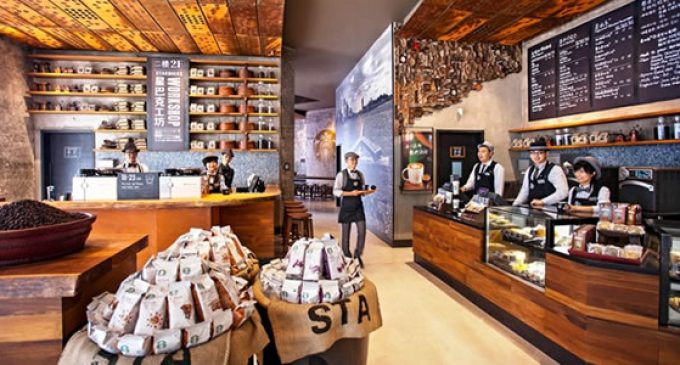‘Latte Levy’ – Coffee Drinkers Want to Go Green, But Price is a Barrier

As the UK Government aims to eliminate avoidable waste with the announcement of its 25-Year Environmental Plan, Mintel research reveals that Britain’s coffee shop drinkers are happy to do their bit for the environment, but not at any cost.
- 40% of out of home hot drinks consumers wouldn’t mind paying extra for drinks served in 100% recyclable cups.
- 73% of coffee shop drinkers say price increases would make them cut back on out of home drinking.
- Café latte (35%) and cappuccino (33%) are Brits favourite coffee shop brews.
While British consumers love their coffee, they also love the environment. Mintel research finds as many as 40% of out of home hot drinks consumers* say they wouldn’t mind paying extra for drinks served in 100% recyclable cups (eg 100% paper, 100% compostable). This sentiment is particularly strong among 20-24-year-olds with half (51%) saying the same. Furthermore, 58% of consumers* think coffee shops should offer a discount to those using their own travel mugs.
Although the nation is keen to cut down on packaging waste, price is an issue for many, as three quarters (73%) of coffee shop drinkers** admit price increases would make them cut back on out of home drinking.
However, consumers are open to seeing environmentally-friendly changes introduced in other areas of the coffee shop. Four in five (82%) Brits believe coffee shop outlets should provide recycling bins, while three quarters (75%) agree restaurants should use recyclable packaging for takeaway/home delivery; a view which is particularly strong among the over 45s (78%).
Trish Caddy, Foodservice Analyst at Mintel, says: “The BBC’s Blue Planet II series really catapulted plastic pollution back into the public debate, and some businesses are already taking the lead in helping ‘nudge’ consumers to play their part in reducing waste. Our research shows that while consumers have great environmental intentions, they are often very time pressured. Also, the hassle factor of carrying around reusable coffee cups could limit the popularity of schemes that reward people for doing so. A more effective solution would be to make things easier for consumers by making cups more easily recyclable by, for example, using 100% biodegradable packaging rather than recycling the plastic.”
Coffee shop sales to reach £3.7 billion by 2022
In 2017, Brits were estimated to have spent £3.4 billion in coffee shops, growing just under 1% from the previous year. Over the next five years, sales are expected to increase a further 10% to reach £3.7 billion by 2022.
Overall, four in five (79%) Brits bought a hot drink out of home in 2017**, rising to 90% of younger Millennials aged 18-27. Meanwhile, coffee shops are drawing 87% of parents of children under the age of 16.
“Younger Millennials and parents make up the core consumers for coffee shops. Younger Millennials are drawn to new offerings, while parents care about ethical sourcing and premium quality experiences. However, our research shows that this group is spreading their budget across a larger number of establishments that now sell coffee, including non-specialists that have expanded into low-cost coffee alongside food offerings. This move threatens to take market share from coffee shops,” she comments.
The battle of the bean: latte or cappuccino?
Finally, when it comes to the battle of the coffee shop bean, it’s a close call. When asked about drinks bought in coffee shops, Brits rank café latte (35%) and cappuccino (33%) as their favourite brews**. Meanwhile, hot chocolate (23%) is the nation’s third most popular coffee shop beverage.**
When it comes to coffee, gentlemen prefer cappuccinos (36% vs 31% of women), while Britain’s ladies love a latte (37% versus 33% of men). But it is the nation’s middle aged drinkers who are the biggest consumers of espresso-based drinks. Some 43% of women aged 35-54** order café lattes, while 42% of men aged 35-54** opt for cappuccinos. Meanwhile, hot chocolate drinking peaks among those aged 16-34 (37%).
While Brits are famed for their love of tea, just a fifth (21%) of coffee shop users have bought English breakfast tea at coffee shops, while espresso/macchiato and americanos are the choice of fewer than one in five (18%) coffee shop consumers.
“Italian-style espresso-based drinks are still amongst the most popular in the UK, especially among middle aged consumers, and are important to retaining interest from this group. Where popularity is waning is with younger generations who are drawn to chocolate-based drinks like mocha and hot chocolate. There are plenty of opportunities for coffee shops to tap into the latest trends, with freshly shaken ice drinks such as mocktails proving particularly popular with younger Brits – as a quarter of young Millennials express interest in these drink types. Brands could also appeal to older drinkers by making the most of their interest in cake and coffee/tea deals and food pairings,” concludes Trish Caddy.
*Data collected in October 2016
**Consumers who bought a drink out of home in the three months ending October 2017


































